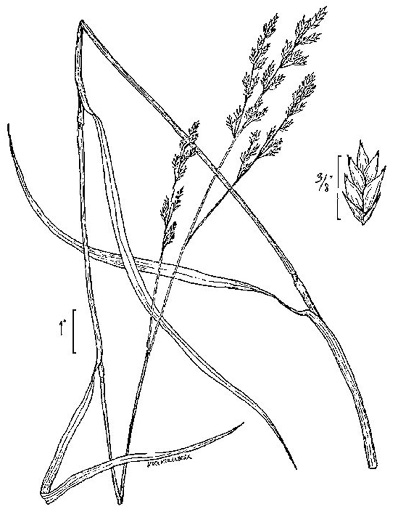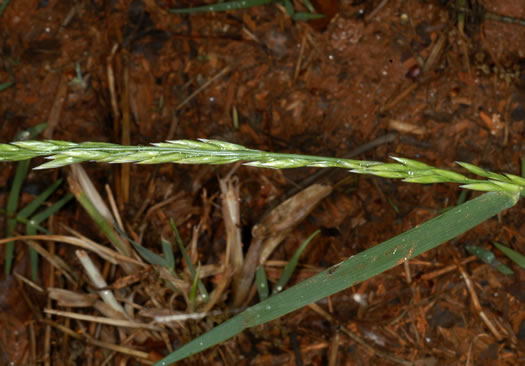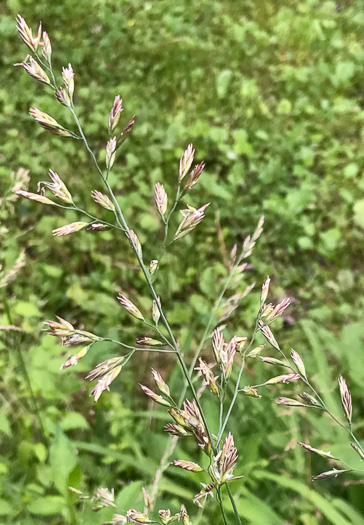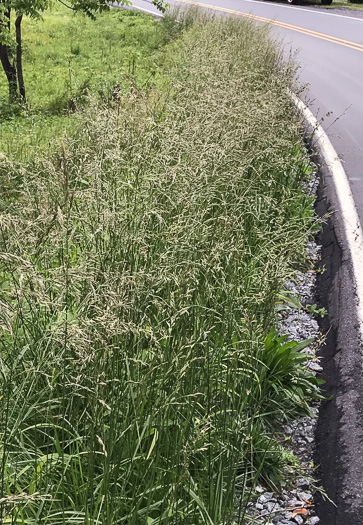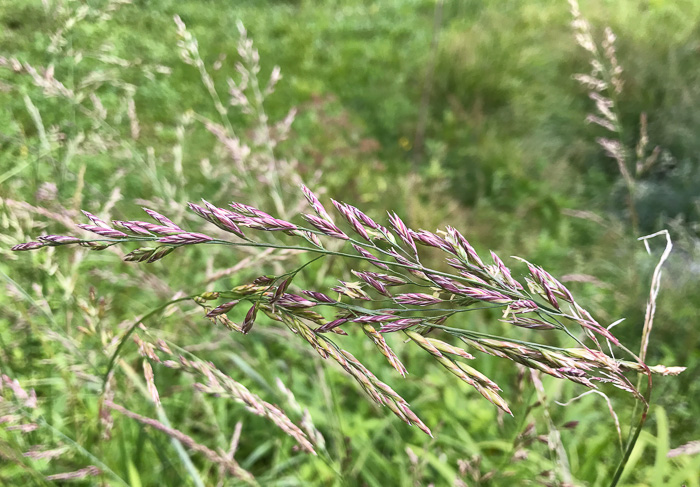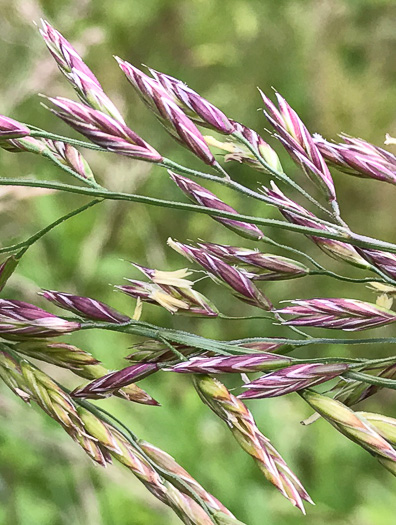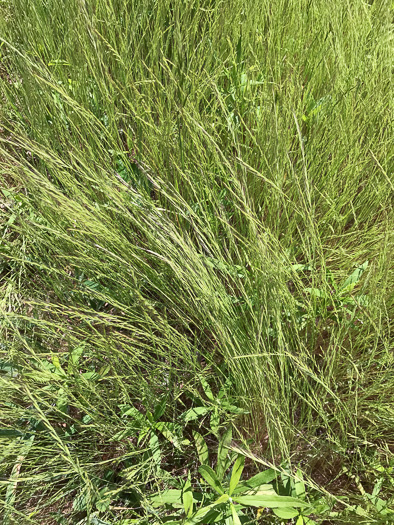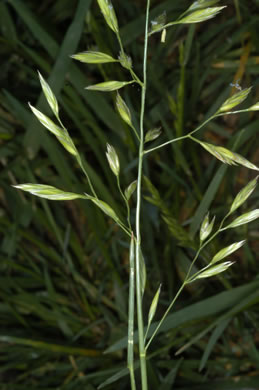Spermatophytes (seed plants): Angiosperms (flowering plants): Monocots: Commelinids: Poales
WEAKLEY'S FLORA OF THE SOUTHEASTERN US (4/14/23):
Lolium arundinaceum
FAMILY
Poaceae
Go to FSUS key
Dig deeper at SERNEC, a consortium of southeastern herbaria.
Check out EDDMapS.org to see where this has been reported.
Tall Fescue grows up to 4 feet tall, sometimes 5 feet. Leaves are relatively sparse, up to a foot long. The inflorescence is long (up to a foot) and rather slender, with short branches; it often leans, over with branches swept towards the ground. The spikelets have 3-6 florets and lack awns. Learn more at Vascular Plants of North Carolina.
SYNONYMOUS WITH
PLANTS NATIONAL DATABASE:
Schedonorus arundinaceus
FAMILY
Poaceae
SYNONYMOUS WITH Floristic Synthesis of North America. BONAP (Kartesz, 2021)
Lolium arundinaceum
SYNONYMOUS WITH Flora of North America north of Mexico, vol. 24 (2007)
Schedonorus arundinaceus
SYNONYMOUS WITH Floristic Synthesis of North America (Kartesz, 1999)
Lolium arundinaceum
INCLUDED WITHIN & NOM. UTIQUE REJ. VASCULAR FLORA OF THE CAROLINAS (Radford, Ahles, & Bell, 1968) 029-18-007:
Festuca elatior FAMILY Poaceae
SYNONYMOUS WITH Britton & Brown Illus Flora of Northeast US & adjacent Canada (Gleason, 1952)
Festuca elatior var. arundinacea
SYNONYMOUS WITH Manual of the Grasses of the US (Hitchcock & Chase, 1950)
Festuca arundinacea
INCLUDED WITHIN & NOM. UTIQUE REJ. Manual of the Southeastern Flora (Small, 1933, 1938)
Festuca elatior
(?) -
Schedonorus phoenix
COMMON NAME:
Tall Fescue, Alta Fescue
To see larger pictures, click or hover over the thumbnails.
USDA-NRCS PLANTS Database / USDA Wetland flora: Field office illustrated guide pnd_loar10_002_lvd
The best generic placement of this and S. pratensis is disputed, per Weakley's Flora (2018).
JK Marlow jkm200522_5164
May Transylvania County NC
Introduced for forage and roadside seeding, per Vascular Plants of North Carolina.
JK Marlow jkm200522_5169
May Transylvania County NC
Inflorescence long (to 1') & rather slender w short branches; often leaning, per Vascular Plants of North Carolina.
JK Marlow jkm200522_5169b
May Transylvania County NC
Spikelets have 3-6 florets and lack awns. L. pratense is very similar, per Vascular Plants of North Carolina.
Patrick D. McMillan pdmfarundinacea_cc
May Collier County FL
Spikelets 10-25mm long, ellipsoid with a pointed tip, short stalked, per Forest Plants of the Southeast and Their Wildlife Uses (Miller & Miller, 2005).
WEAKLEY'S FLORA OF THE SOUTHEASTERN US (4/14/23):
Lolium arundinaceum
FAMILY
Poaceae
SYNONYMOUS WITH
PLANTS NATIONAL DATABASE:
Schedonorus arundinaceus
FAMILY
Poaceae
SYNONYMOUS WITH
Floristic Synthesis of North America. BONAP (Kartesz, 2021)
Lolium arundinaceum
SYNONYMOUS WITH
Flora of North America north of Mexico, vol. 24
Schedonorus arundinaceus
SYNONYMOUS WITH
Floristic Synthesis of North America (Kartesz, 1999)
Lolium arundinaceum
INCLUDED WITHIN & NOM. UTIQUE REJ.
VASCULAR FLORA OF THE CAROLINAS (Radford, Ahles, & Bell, 1968) 029-18-007:
Festuca elatior
FAMILY
Poaceae
SYNONYMOUS WITH
Britton & Brown Illus Flora of Northeast US & adjacent Canada (Gleason, 1952)
Festuca elatior var. arundinacea
SYNONYMOUS WITH
Manual of the Grasses of the US (Hitchcock & Chase, 1950)
Festuca arundinacea
INCLUDED WITHIN & NOM. UTIQUE REJ.
Manual of the Southeastern Flora (Small, 1933, 1938)
Festuca elatior
(?)
-
Schedonorus phoenix
If a search such as "Carex leptalea var. leptalea" doesn't deliver the results you want, try "Carex leptalea".
Or, to minimize chances of a misspelling, try just "Carex le".
Less is more: If "pencil flower" doesn't deliver the results you want, try "pencil".

